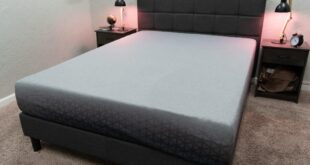Earlier this year, I tried out a Chromebook-like keyboard connected to a pair of AR glasses called Spacetop, made by a startup called Sightful, that projected a virtual screen of apps floating across the room. It used AR glasses as the display instead of a laptop screen. As a hardware product, it seemed way ahead of its time.
Now, the founders of Sightful tell me their augmented reality laptop won’t be arriving at all. The company has canceled its plans for the device, emailing people who pre-ordered the $1,900 Spacetop G1 and offering to refund the $100 deposit.
Instead, Sightful is shifting to a software product for newer Windows laptops that will offer a similar AR glasses-connected experience. It will run Windows apps and and connect with Windows’ CoPilot AI features.
Is the dream of an AR laptop dead? Not quite. Now the laptop you already own might be ready for augmented reality.
AR glasses offer more privacy than a laptop because nobody can see your screen.
By AR, Sightful means running multiple Windows apps on a glasses-based display. What you see inside the glasses is a bunch of windows floating in the air. Not everyone needs that, but in some ways it can be very useful. It could be a travel tool that’s focused on privacy, because no one can see your display.
By extending your computer’s displays much like what you can do with a Quest headset or Apple Vision Pro, Sightful is keeping the pitch very practical. As the capabilities for apps evolve, the company’s goals include being able to run full 3D AR apps as well.
The future of AR laptops is Windows AI
When I spoke with Sightful’s founders, Tamir Berliner and Tomer Kahan, they explained that the reason for the shift to a software-based product boils down to two letters: AI. Microsoft’s new emphasis on system-wide artificial intelligence in Windows and dedicated AI-optimized laptop chipsets with neural processing units could mean connected AR glasses will work a lot better on Windows PCs.
The upgraded hardware could take advantage of AI that wouldn’t have been available on the Spacetop’s custom Chrome-like web-based device. According to Berliner and Kahan, running AR glasses using the dedicated NPU AI processor can be done without draining battery life, something that wasn’t easily achievable before.
Microsoft’s Windows CoPilot Plus PCs using ARM-based processors seem more adjacent to where Spacetop was heading with its own Qualcomm-based processors on its Spacetop hardware, but in a more powerful form.
Watch this: Hands-On With Spacetop the AR Laptop
“The moment we saw [Microsoft’s] announcements about AI computers — that everyone’s computers, in the coming few years, are going to be AI computers — it made perfect sense to say we can enable the audience earlier and faster than if we built our own integrated solution,” they told me.
The Windows-based software is going to be available by the end of the year, according to Berliner and Kahan, but they didn’t tell me the price yet. Sightful’s software for Windows will work exclusively at first with specific models of Xreal’s AR display glasses, which were hard-wired into Spacetop’s G1 hardware package. On Windows, they’ll be tethered via USB-C. I asked about possibilities for this setup to work with other display glasses like those from Lenovo and TCL, but right now that’s not in the immediate plans.
The original Spacetop laptop worked with Xreal’s AR glasses wired to the device. The new software-based version will use the same glasses connected to a Windows laptop via USB-C.
The pivot to AI, like with many other tech categories, is a common theme in augmented and virtual reality companies over the last few years. Spacetop’s AI focus amounts to an admission that what’s going on now in computers is big enough that whatever Spacetop makes for business-focused work needs to work with current AI tools too. On Windows PCs, you could either run the laptop’s screen at the same time, or black it out and just use glasses-based displays for privacy.
Sightful’s founders don’t have plans to work with Macs yet, but told me “we have our ears open.” The company plans to also look at other ways to use the software it’s developing for nonlaptop devices, including TVs and phones, but no further plans are being announced yet.
Berliner and Kahan see a lot of future interplay between AI and XR, and it could change what Spacetop feels like in the future. Demos I saw on Spacetop’s hardware looked more like a series of small floating 2D app windows side by side in a virtual curved display. In future versions, more 3D layouts and full XR-type apps could be possible via Windows, they told me.
Of course, glasses like Xreal’s can already connect to Windows laptops to mirror the display, and companies like Lenovo have PC solutions for adding extra windows onto glasses too. Ultimately, Sightful still has to prove that its software can connect laptops and glasses can bring something new and useful to the table.
Microsoft has already done its own mixed reality pivot to software, discontinuing the HoloLens 2 and moving away from Windows-based VR headsets. Instead, Microsoft is connecting many of its services and apps with Meta’s Quest headsets, and will run 3D apps through Windows that way — although for now you need a larger Quest headset because the system won’t work with a smaller, more portable pair of glasses.
Sightful’s AR-based laptop software looks like it could be riding in ahead of where future peripherals and apps are heading. Apple’s Vision Pro works well with Macs, but it’s a lot larger and more expensive. The next Spacetop solution could be really interesting, but I’ll have to wait until the software comes out to try it in Windows form.
 synnbiob
synnbiob
